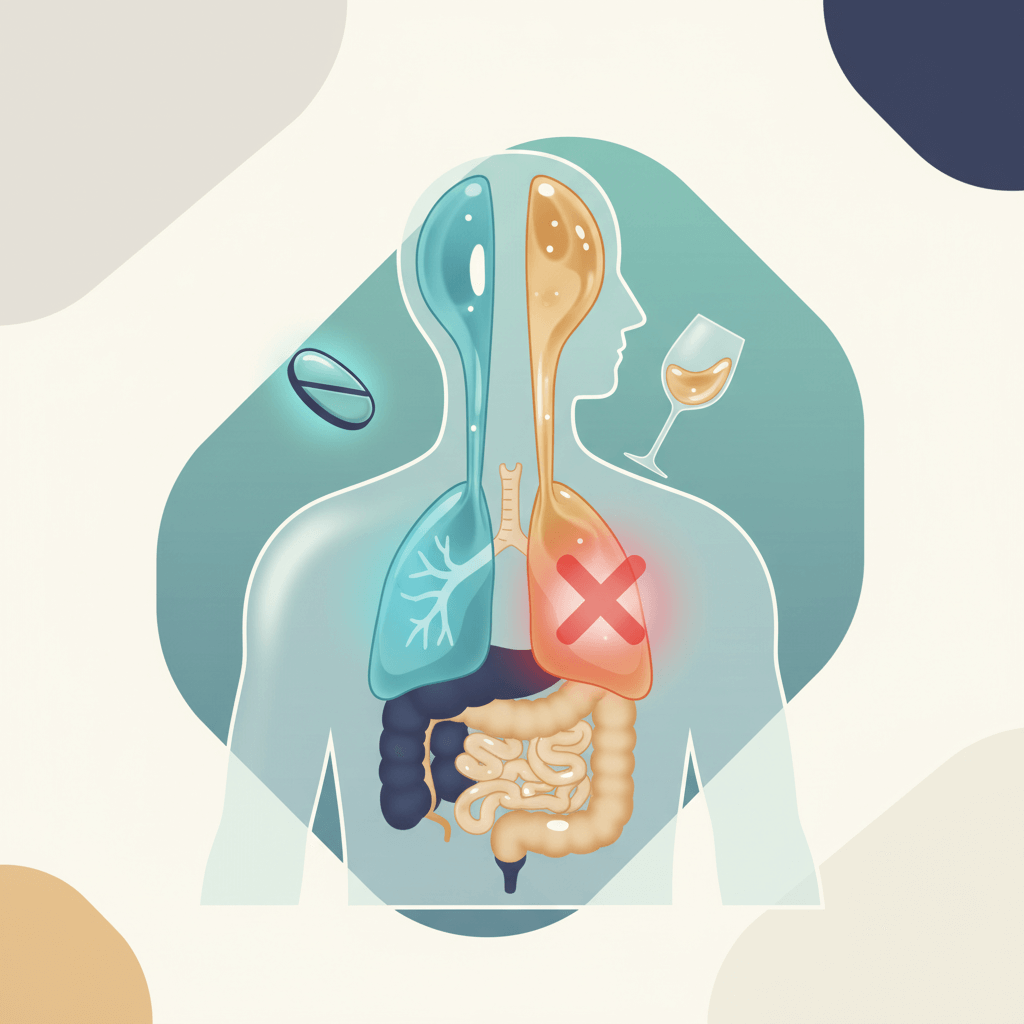Understanding Opioids
To comprehend the ongoing discussions surrounding opioids, it is essential to have a clear understanding of what they are and the different types that exist.
Definition of Opioids
Opioids are a class of drugs that act on the opioid receptors in the brain and spinal cord, producing pain relief and a sense of euphoria. They are commonly prescribed to manage acute and chronic pain. Opioids can be derived naturally from the opium poppy plant (such as morphine and codeine) or synthetically manufactured (like oxycodone and fentanyl).

Types of Opioids
There are several types of opioids, each with its own potency and usage. Some common types of opioids include:
Type of Opioid and Examples
Natural Opioids: Morphine, Codeine
Semi-Synthetic Opioids: Oxycodone, Hydrocodone
Synthetic Opioids: Fentanyl, Methadone
Natural opioids, like morphine and codeine, are derived from the opium poppy plant. These substances have been used for centuries for their pain-relieving properties. Semi-synthetic opioids, such as oxycodone and hydrocodone, are derived from natural opioids but are chemically modified to enhance their effectiveness. Synthetic opioids, like fentanyl and methadone, are created entirely in a laboratory and can be much more potent than natural or semi-synthetic opioids.
Understanding the various types of opioids is crucial in comprehending the impact they can have on individuals and society as a whole. In the following sections, we will delve deeper into the medical uses, side effects, addiction risks, and regulations surrounding opioids.
Opioid Use and Effects
Opioids are a class of drugs that are commonly used for pain management and have both medical uses and potential side effects. In this section, we will explore the medical uses of opioids and the side effects associated with their use.
Medical Uses of Opioids
Opioids are effective in relieving pain and are often prescribed by healthcare professionals for various medical conditions. They work by binding to opioid receptors in the brain and spinal cord, reducing the perception of pain. Some common medical uses of opioids include:
- Management of acute pain following surgery or injury
- Treatment of chronic pain, such as cancer-related pain or severe arthritis pain
- Control of pain during palliative or end-of-life care
It's important to note that opioids are typically prescribed for short-term use or for individuals with severe pain that is not well-managed by other medications or therapies. Healthcare providers carefully assess the risks and benefits before prescribing opioids to ensure safe and appropriate use.
Side Effects of Opioids
While opioids can effectively manage pain, they also come with potential side effects. These side effects can vary depending on the individual and the specific opioid medication used. Common side effects of opioids include:
- Drowsiness and sedation
- Nausea and vomiting
- Constipation
- Itching or rash
- Respiratory depression (slowed breathing)
It's essential to take opioids as prescribed and to be aware of these potential side effects. If you experience severe or persistent side effects, it is important to contact your healthcare provider for further guidance.
Long-term use of opioids can lead to dependence and addiction, which are serious concerns associated with these medications. It is crucial to follow the prescribed dosage and duration, as well as to discuss any concerns or changes in your condition with your healthcare provider.
Understanding the medical uses and potential side effects of opioids is important for both healthcare professionals and the general public. By being informed, individuals can make educated decisions about the use of opioids and work closely with their healthcare providers to ensure safe and effective pain management.
Opioid Crisis
The opioid crisis is a pressing issue that has garnered significant attention in recent years. It has become a major public health concern and has had a profound impact on society. Understanding the opioid crisis is crucial for raising awareness and finding effective solutions to combat this growing problem.
Overview of the Opioid Crisis
The opioid crisis refers to the widespread misuse and addiction to opioids, which include both prescription painkillers and illicit drugs. Opioids are a class of drugs that act on the nervous system to relieve pain. They can be highly effective in managing acute and chronic pain but also carry a high risk of addiction.
According to the Centers for Disease Control and Prevention (CDC), the United States is currently experiencing an opioid epidemic. Opioid-related overdoses and deaths have reached alarming levels, with devastating consequences for individuals, families, and communities. The crisis has extended beyond the boundaries of the United States, affecting countries worldwide.
Impact on Society
The opioid crisis has had a profound impact on various aspects of society. It has resulted in significant economic burdens, strained healthcare systems, and overwhelmed communities. The consequences of the crisis are far-reaching and affect individuals of all ages, races, and socioeconomic backgrounds.
One of the most devastating impacts of the opioid crisis is the loss of lives. Opioid-related overdoses have claimed thousands of lives each year. In the United States alone, the CDC estimates that over 500,000 people have died from opioid overdoses between 1999 and 2019.
Furthermore, opioid addiction has had a detrimental effect on families and communities. It can tear apart relationships, disrupt social structures, and contribute to a cycle of addiction and crime. The financial burden associated with the opioid crisis is staggering, including costs related to healthcare, addiction treatment, law enforcement, and lost productivity.
Addressing the opioid crisis requires a multifaceted approach that involves healthcare providers, policymakers, communities, and individuals. Efforts to combat the crisis include increasing access to addiction treatment, promoting responsible prescribing practices, implementing harm reduction strategies, and raising public awareness about the risks and consequences of opioid misuse.
By understanding the scope and impact of the opioid crisis, society can work collaboratively to develop effective strategies to prevent addiction, provide support for those affected, and ultimately reduce the devastating effects of this ongoing public health crisis.
Opioid Addiction
Opioid addiction is a serious and complex issue that affects individuals and communities across the globe. Understanding the risk factors for opioid addiction and the available treatments is crucial for addressing this public health concern.
Risk Factors for Opioid Addiction
Several factors contribute to an individual's risk of developing opioid addiction. These risk factors can vary from person to person, and they can be influenced by a combination of genetic, environmental, and individual factors.
Some common risk factors for opioid addiction include:
- Genetic Predisposition: Certain genetic variations can make individuals more susceptible to developing addiction disorders.
- Family History: Having a family history of substance abuse or addiction can increase the likelihood of developing opioid addiction.
- Chronic Pain: Individuals with chronic pain conditions who are prescribed opioids for pain management are at a higher risk of developing addiction.
- Mental Health Disorders: Co-occurring mental health disorders, such as depression or anxiety, can increase the risk of opioid addiction.
- Social and Environmental Factors: Peer pressure, social isolation, and exposure to environments where opioids are readily available can contribute to the development of addiction.
It's important to note that while these risk factors increase the likelihood of addiction, they do not guarantee that an individual will develop an addiction. Additionally, the presence of risk factors does not imply that opioid addiction is a personal failing, but rather a complex interplay of various factors.
Treatment for Opioid Addiction
Treating opioid addiction requires a comprehensive approach that addresses both the physical and psychological aspects of the disorder. The following treatments have been proven effective in helping individuals overcome opioid addiction:
- Medication-Assisted Treatment (MAT): MAT involves the use of FDA-approved medications, such as methadone, buprenorphine, or naltrexone, in combination with counseling and behavioral therapies. These medications help reduce cravings, alleviate withdrawal symptoms, and normalize brain function, allowing individuals to focus on recovery.
- Behavioral Therapies: Various behavioral therapies, such as cognitive-behavioral therapy (CBT) and contingency management, are used to address the psychological aspects of addiction. These therapies aim to modify harmful thought patterns, develop coping skills, and promote healthier behaviors.
- Support Groups and Peer Support: Support groups, such as Narcotics Anonymous (NA) and SMART Recovery, provide individuals with a supportive community of peers who understand the challenges of addiction. Peer support can offer encouragement, guidance, and a sense of belonging during the recovery process.
- Inpatient or Outpatient Rehabilitation Programs: Depending on the severity of addiction, individuals may benefit from inpatient or outpatient rehabilitation programs. Inpatient programs provide 24/7 medical and therapeutic support in a residential setting, while outpatient programs offer structured treatment while allowing individuals to live at home.
- Continuing Care and Aftercare: Recovery from opioid addiction is a lifelong journey. Continuing care, including ongoing therapy, regular medical check-ups, and participation in support groups, is essential for maintaining sobriety and preventing relapse.
It's important for individuals struggling with opioid addiction to seek professional help from healthcare providers or addiction specialists. They can assess the individual's unique circumstances and recommend the most appropriate treatment plan to support their recovery journey.
Remember, opioid addiction is a treatable condition, and recovery is possible with the right support, treatment, and commitment to change.
Opioid Regulations
In response to the growing concern surrounding the misuse and addiction of opioids, governments and organizations have implemented regulations and initiatives to address the issue. This section explores the government regulations on opioids and the initiatives taken to combat the opioid crisis.
Government Regulations on Opioids
Governments around the world have implemented various regulations to control the prescribing, distribution, and use of opioids. These regulations aim to prevent the overprescribing of opioids, monitor their distribution, and ensure their safe and appropriate use.
Some common government regulations on opioids include:
- Prescription Monitoring Programs (PMPs): These programs enable healthcare providers and pharmacists to track and monitor the prescribing and dispensing of opioids. PMPs help identify potential cases of overprescribing, "doctor shopping," and diversion of opioids.
- Prescription Drug Monitoring Databases (PDMDs): PDMDs are electronic databases that store information about prescribed controlled substances, including opioids. These databases allow healthcare providers to access patients' prescription histories, helping them make informed decisions when prescribing opioids.
- Prescription Limits: Many governments have implemented limits on the quantity and duration of opioid prescriptions. These limits aim to prevent excessive opioid use and reduce the risk of addiction.
- Drug Take-Back Programs: These programs provide safe and secure disposal methods for unused or expired opioids. By encouraging individuals to dispose of opioids properly, drug take-back programs help prevent their misuse and diversion.
It's important to note that government regulations on opioids may vary between countries, states, and regions. Healthcare providers and patients should familiarize themselves with the specific regulations in their respective jurisdictions.
Initiatives to Combat Opioid Crisis
In addition to government regulations, various initiatives have been undertaken to combat the opioid crisis. These initiatives involve collaborations between government agencies, healthcare providers, community organizations, and advocacy groups. Their goals include raising awareness, providing education, expanding access to treatment, and reducing the stigma associated with opioid addiction.
Some notable initiatives to combat the opioid crisis include:
- Education and Awareness Campaigns: These campaigns aim to educate the public, healthcare professionals, and policymakers about the risks and consequences of opioid misuse. They promote safe prescribing practices, encourage responsible opioid use, and provide information about treatment options for opioid addiction.
- Increased Access to Naloxone: Naloxone is an opioid overdose reversal medication. Initiatives have focused on increasing access to naloxone for individuals at risk of opioid overdose, as well as training community members and first responders on its administration.
- Expansion of Treatment Programs: Efforts have been made to expand access to evidence-based treatment programs for opioid addiction, such as medication-assisted treatment (MAT). MAT combines medications, such as methadone or buprenorphine, with counseling and behavioral therapies to help individuals overcome opioid addiction.
- Support for Harm Reduction Strategies: Harm reduction strategies aim to minimize the negative consequences associated with opioid use. These strategies include needle exchange programs, safe injection sites, and outreach programs that provide resources and support to individuals using opioids.
By implementing government regulations and supporting initiatives, there is a collective effort to address the opioid crisis from multiple angles. These measures aim to reduce opioid-related harm, prevent addiction, and provide support and treatment for those affected by opioid use disorder.
Opioids in the News
Opioids have become a significant topic of discussion in the media in recent years. The widespread impact of the opioid crisis has caught the attention of news outlets, leading to increased coverage and public awareness. In this section, we will explore the media coverage of opioids and its influence on public perception and awareness.
Media Coverage of Opioids
Media outlets have been actively reporting on the issue of opioids, shedding light on the various aspects of the crisis. News articles, television segments, and documentaries have delved into the causes, consequences, and potential solutions related to opioids. The media coverage often includes stories of individuals affected by opioid addiction, interviews with experts, and investigations into the pharmaceutical industry's role in the crisis.
By highlighting personal stories and providing in-depth analysis, the media plays a crucial role in raising awareness and educating the public about the complexities of opioids. Media coverage has helped to reduce the stigma associated with opioid addiction and has contributed to a broader understanding of the crisis.
Public Perception and Awareness
The extensive media coverage of opioids has significantly influenced public perception and increased awareness of the issue. Individuals who may not have previously been familiar with opioids have gained knowledge about the dangers and consequences associated with their use. The media has helped to disseminate important information about the risks of opioid addiction, the signs of overdose, and available resources for treatment.
Public awareness campaigns and educational initiatives have also utilized the media to reach a wider audience. Through news stories, public service announcements, and social media campaigns, efforts have been made to inform and empower individuals to make informed decisions regarding opioid use.
The media's role in highlighting the opioid crisis has prompted public discussions, policy debates, and calls for action. By keeping the issue in the public eye, media coverage has contributed to efforts to address the crisis and find solutions to combat opioid addiction.
It is important, however, to approach media coverage with a critical eye and seek information from reliable and reputable sources. Understanding the complexities of the opioid crisis requires looking beyond sensational headlines and engaging with comprehensive reporting that provides a balanced perspective.
By staying informed through credible news sources, individuals can continue to contribute to the ongoing dialogue surrounding opioids and work towards creating a society that is better equipped to address the challenges posed by this crisis.
References
What are opioids and why are they dangerous?
What Are Opioids? - Opioid Definition | Made for This Moment
Painkillers and Opioid Use Disorder
Related Opioid & Prescription Painkiller Articles
- Overcoming Opioid Addiction — Explore treatment options and how Prescott House supports long-term recovery.
- The Connection Between Prescription Painkillers and Heroin — Understand the pathway from prescription misuse to illicit opioid use.
- Fentanyl Overdose Crisis — Learn why synthetic opioids are especially dangerous and how they fuel overdose trends.
- The Difference Between Oxycodone and Hydrocodone — Compare risks, potency, and misuse potential between two common opioids.
- Prescription Opioid Abuse Causes — Dive into underlying factors that lead to misuse and dependency.
- How Long Do Drugs Stay in Your System? — Key info on detection windows for opioids and what that means for recovery.













